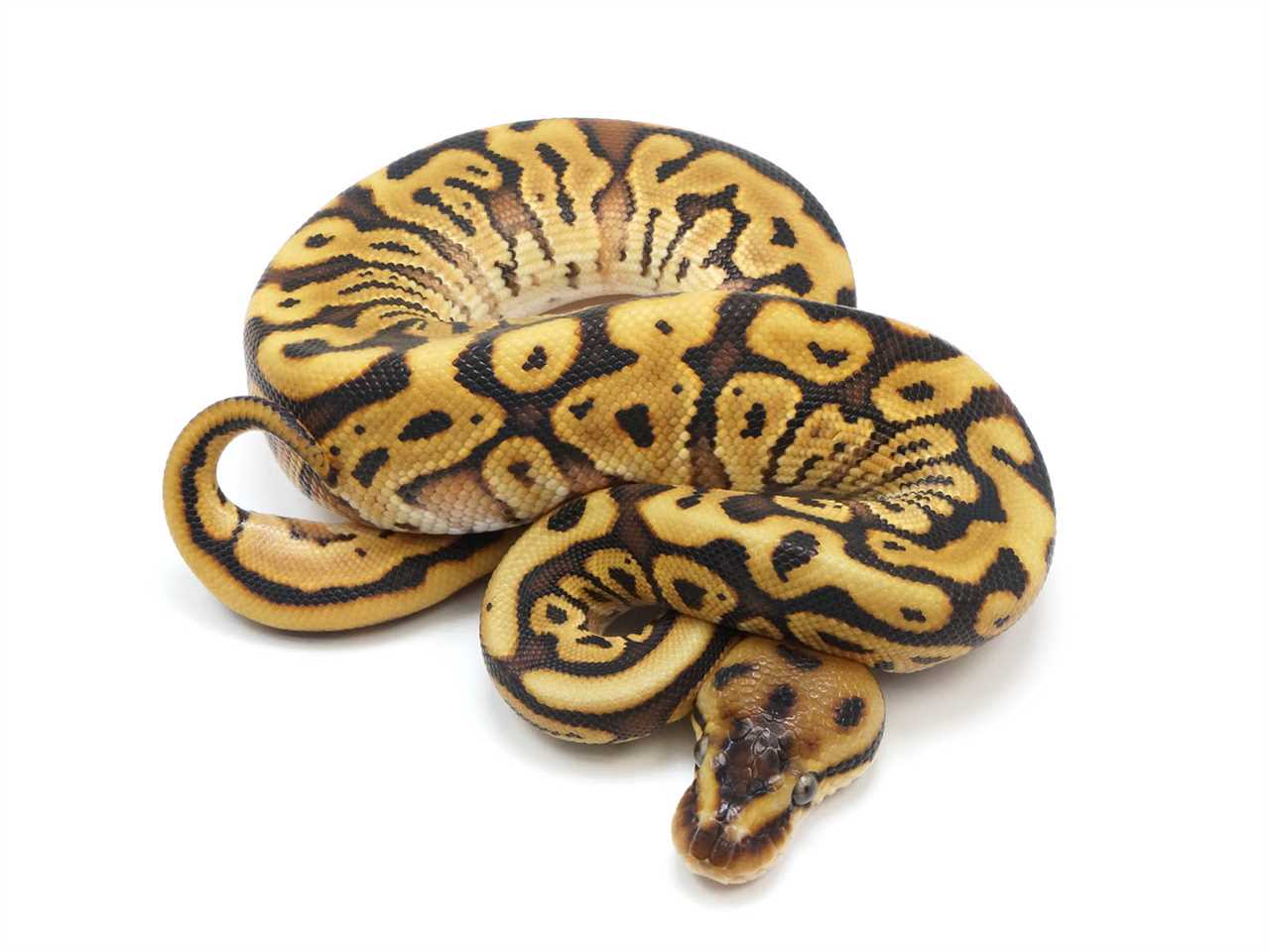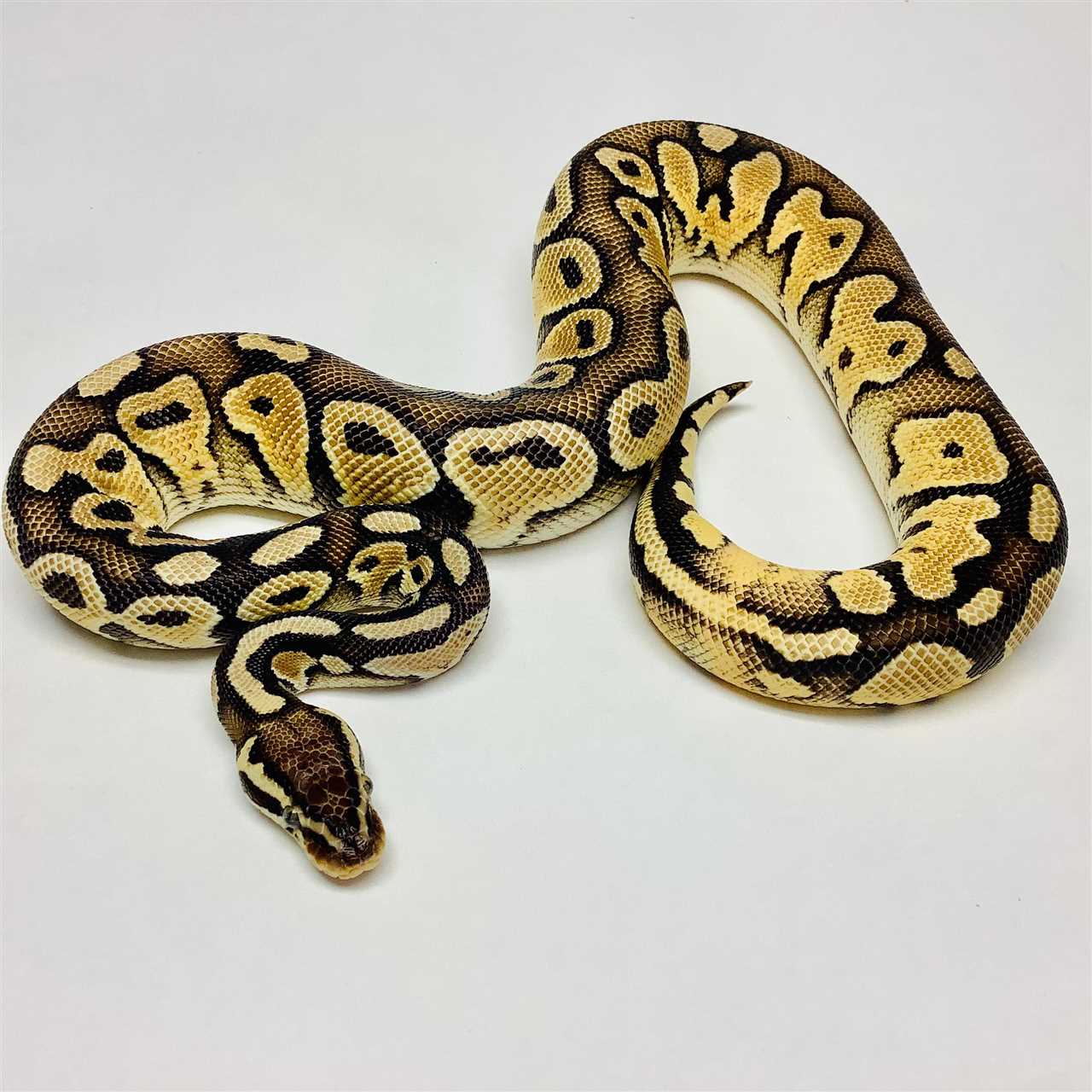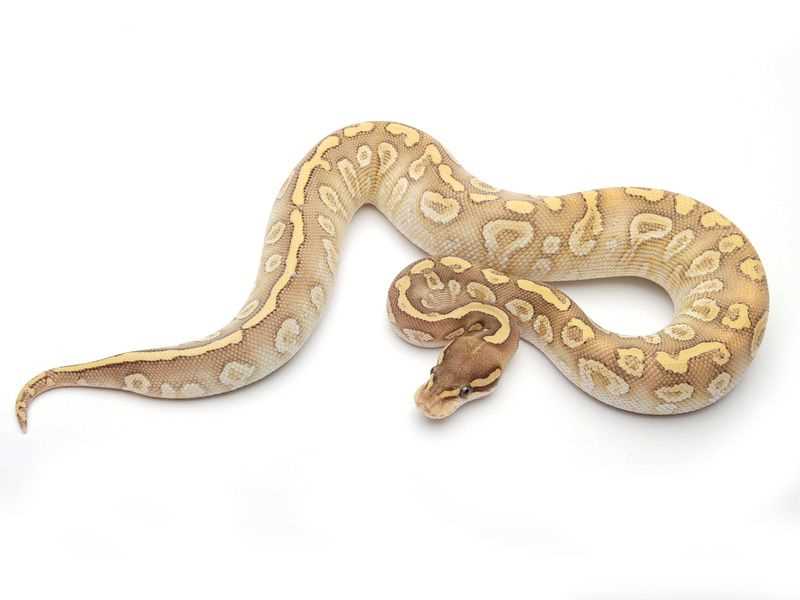
Unveiling its mesmerizing beauty and unique characteristics, the ball python is a truly special reptile that has captured the hearts of pet owners worldwide. With its striking colors and intricate patterns, this snake stands out in the reptile kingdom.
What makes the ball python even more enchanting is its intricate pattern. From the classic “ball” pattern to the mesmerizing “banana” and “spider” patterns, each python showcases its own unique design. These patterns create a captivating visual display that draws the attention of snake enthusiasts and collectors.
Keeping a ball python as a pet is a truly rewarding experience. Contrary to popular belief, ball pythons are docile and gentle creatures, making them ideal for both beginner and experienced reptile owners. Their calm temperament and low maintenance requirements make them an excellent choice for those looking to add a new member to their reptile family.
So, delve into the enchanting world of the special ball python and discover the countless wonders it has to offer. Whether you’re mesmerized by its vivid colors, intricate patterns, or gentle nature, the ball python is a truly exceptional pet that will undoubtedly bring joy and fascination into your life.
About Ball Pythons

Ball Pythons are native to the grasslands and forests of West and Central Africa. They are named “ball” pythons because of their instinctive habit of curling into a ball when they feel threatened or stressed. This behavior, along with their striking coloration, makes them a captivating species to observe and care for.
The Unique Characteristics of Ball Pythons
One of the most remarkable features of ball pythons is their wide variety of beautiful morphs. A “morph” refers to a genetic color or pattern variation that occurs naturally or through selective breeding. These morphs create stunning combinations of colors and patterns on the python’s scales, offering a breathtaking sight for snake lovers.
Ball pythons exhibit a wide range of morphs, including albino, piebald, pastel, cinnamon, and many more. Each morph has its own unique appearance, making every ball python a truly special and one-of-a-kind pet. Whether you prefer vibrant hues, subtle shades, or intricate patterns, there is a ball python morph to suit every taste.
Another unique quality of ball pythons is their ability to go on extended fasting periods without any harmful effects. In the wild, they typically experience long periods of food scarcity, which has allowed them to adapt and survive without regular meals. This characteristic makes ball pythons relatively low-maintenance pets in terms of feeding.
Ball pythons also have the amazing ability to sense heat using heat-sensing pits located on their face. These pits enable them to detect the body heat of their prey, aiding in their hunting and feeding abilities. This unique sensory feature contributes to their overall success as predators.
Caring for Ball Pythons
Feeding and handling are also important aspects of caring for ball pythons. These snakes are carnivores and primarily feed on rodents. It is recommended to feed them pre-killed or frozen-thawed prey, as live prey can sometimes be a risk to the snake. Regular feeding schedules should be followed, and the size of the prey should be appropriate for the snake’s size.
In addition to their natural patterns, ball pythons are also known for their stunning morphs. These morphs are variations in color and pattern that occur naturally or through selective breeding. They can range from simple color variations to complex patterns, such as stripes or spots. Exploring the world of ball python morphs can be a fun and exciting aspect of owning one of these unique reptiles.
Creating the Perfect Habitat for Your Ball Python
First, you need to provide a suitable enclosure for your ball python. A glass terrarium or a plastic tub with proper ventilation is recommended. Your python will need enough space to move around comfortably, so choose an enclosure that is large enough to accommodate its full-grown size.
Next, consider the temperature and humidity requirements of your ball python. These snakes are native to the tropical regions of Africa, so they need a warm and humid environment to thrive. Use a heat source, such as an under-tank heater or a heat lamp, to maintain a temperature gradient of 75-85°F (24-29°C) on one end of the enclosure. This allows your snake to regulate its body temperature by moving between the warm and cool areas.
Humidity is also crucial for ball pythons, as it helps with shedding their skin. Keep the humidity level between 50-60% by misting the enclosure daily and providing a water bowl large enough for your snake to soak in if desired.
Decorate the habitat with branches, hiding spots, and a suitable substrate. Ball pythons are shy and like to hide, so provide multiple hiding spots using artificial caves or dense foliage. This will help your snake feel secure and reduce stress. Choose a substrate that retains moisture well, such as coconut husk or cypress mulch, to maintain the humidity level in the enclosure.
Regularly clean the enclosure to maintain a hygienic environment for your ball python. Spot clean any waste or soiled substrate, and perform a deep clean every few months by removing all the substrate, disinfecting the enclosure, and replacing it with fresh substrate.
Feeding and Handling
Feeding
Feeding your ball python can be done by offering either live or pre-killed prey. Live prey can be more stimulating for the snake but also pose a slight risk of injury. Pre-killed prey is safer but may require some encouragement to entice the snake to eat.
It’s essential to feed your snake the correct size of prey. A general guideline is to offer a meal that is no larger than the widest part of the snake’s body. Overfeeding can lead to obesity and health problems, while underfeeding can result in malnutrition.
Handling
Before handling your snake, make sure your hands are clean and free of strong scents. Snakes have a keen sense of smell, and unfamiliar or strong odors may cause them stress or discomfort.
To handle your ball python, gently pick it up around the middle of its body, supporting its weight fully. Avoid grabbing or squeezing the snake too tightly, as this can cause distress. Supporting its body and allowing it to move freely will help the snake feel secure.
Handling your ball python regularly can help build trust and strengthen the bond between you and your pet. It also provides an opportunity for you to closely observe your snake’s behavior and overall health.
Exploring the World of Ball Python Morphs

Ball python morphs are the result of selective breeding, where breeders purposely pair different snakes with desired traits to produce offspring with specific morphs. This process has led to a vast array of morphs, ranging from subtle variations to strikingly bold and beautiful patterns.
One of the most popular types of morphs is the pattern morph. These morphs alter the way the snake’s scales are arranged, resulting in patterns such as stripes, spots, or even rings. From intricate and complex patterns to simple and understated ones, there is a pattern morph for every snake lover.
Another type of morph is the color morph. These morphs are all about the different hues and shades that a ball python can display. Some color morphs produce snakes with bright and vibrant colors, while others create snakes with more muted and earthy tones. The possibilities are endless, and each color morph adds a unique and captivating element to the snake’s appearance.
What makes ball python morphs even more special is that they can be combined. Breeders have developed countless combinations of pattern and color morphs, resulting in snakes that are truly one-of-a-kind. These morph combinations open up even more possibilities for snake enthusiasts and allow them to create their own personalized and unique pets.
Exploring the World of Colorful Morphs
Each ball python morph is characterized by its distinct color and pattern combination, which sets it apart from the standard wild type ball python. These morphs are the result of selective breeding and genetic mutations, resulting in a wide range of stunning variations.
The Fascinating Colors
The colors of ball python morphs can range from vibrant blues and yellows to rich browns and blacks. Whether you prefer a bright and bold morph or a more subtle and muted one, you can find a ball python that suits your taste. Some popular color morphs include the albino, piebald, and pastel morphs.
The Intricate Patterns
Along with their striking colors, ball python morphs also exhibit intricate patterns that add to their uniqueness. These patterns can vary from intricate stripes and speckles to mesmerizing blotches and spots. Some popular pattern morphs include the spider, pinstripe, and banana morphs.
One of the most fascinating aspects of ball python morphs is that they can be combined to create new and even more stunning variations. Breeders are constantly working to produce new morphs, pushing the boundaries of what is possible in terms of color and pattern.

I’m Lena Adams—a product of an unconventional upbringing in the African wilderness. My father, a daring explorer of African wildlife, sparked my fascination with reptiles, a passion that intertwined with the tragic loss of my mother during an expedition, leaving an indelible mark on my life. Driven to understand the creatures that captivated my parents, I embarked on my journey, sharing insights about reptiles, frogs, and lizards on my website. Through my explorations and conservation efforts, I honour my family’s legacy while seeking connections—to the creatures, nature, and the mother whose presence I yearn to understand.
